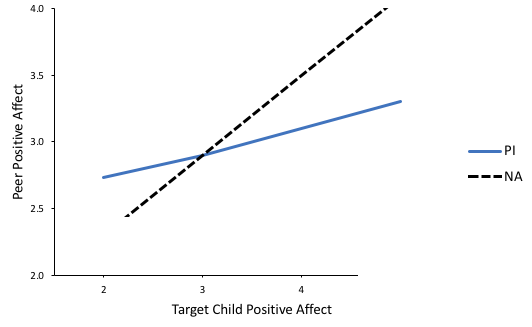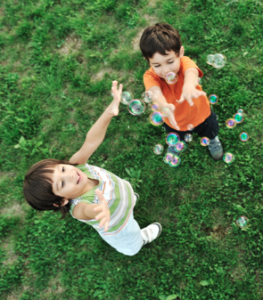By Carrie DePasquale
As we have mentioned before from the Transition into the Family study, children adopted internationally tend to have an under-active stress-regulatory system and produce too little of the stress hormone cortisol. These children who produce too little cortisol may also be more likely to have difficulties with peers upon entering kindergarten. The Peers follow-up study examined whether this problem persists into middle childhood, when the children are 8-11 years old, because this is when children have increasing independence and peer interactions become more complex. For this study, 58 children from the original Transition into the Family study were paired with another same-age, same-sex child to play several cooperative games. During these games, we measured cortisol production, interaction quality, positive affect, and conflict.
Last year we told you that internationally adopted children seem to be doing just as well as their non-adopted peers during these interactions. This year, after nearly doubling the number of participants, we were encouraged to see that this pattern remains. As you can see in Figure 3, internationally adopted children (the “PI” group) interacted just as well, showed just as much positive affect, and had just as little conflict as their non-adopted peers (the “NA” group). This finding is promising, as it shows that internationally adopted children can improve socially over time.

However, we looked a little deeper and found something very interesting. It seems that, even though children adopted internationally interact with peers just as well as non-adopted children, at least according to our scoring, the way children respond to internationally-adopted children may be different. Figure 4 shows that regardless of whether internationally adopted children were showing positive or negative affect, their peer tended to respond more negatively to them. Conversely, when non-adopted children were positive, their peer was positive, and when they were negative, their peer was negative. This was true of their cortisol production as well. This may mean that there are certain social cues in these interactions that peers are picking up on that we have not. So, while internationally-adopted children’s social behavior seems to improve over time, there may be some nuances of these peer interactions that we still do not understand.

The results of this study are reminiscent of a study we reported on several years ago conducted by Clio Pitula (now a licensed clinical psychologist and assistant professor at Children’s Hospital Colorado). In the BDNF Study, Dr. Pitula examined parent-reports of peer rejection among internationally-adopted teens and found greater reported rejection, even though parents reported similar social behavior towards peers. She also reported that peer rejection for PI teens, as for NA teens, was predictive of higher depressive symptoms. Thus, both of these studies together indicate that we need to better understand the social cues that internationally-adopted, orphanage-reared children are sending that lead to poor peer responses. If you or your children have ideas about this, we would love to hear them. Feedback can be directed to iap@umn.edu.




